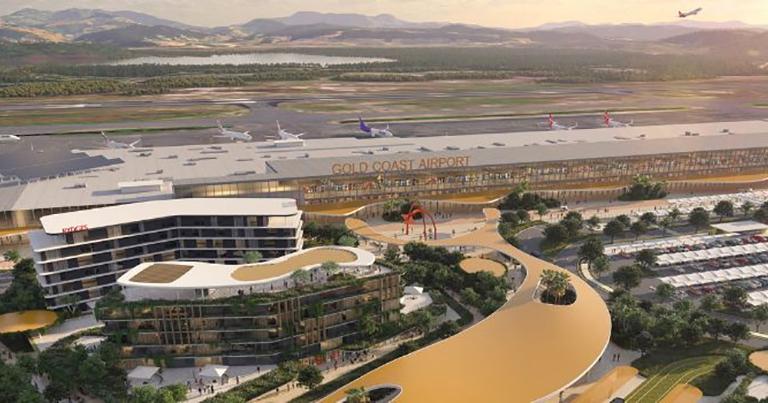
Gold Coast Airport has unveiled plans to deliver a future-focused precinct with the addition of a retail village, health and wellness hub and conference and tech centre as proposed in its 2024 Preliminary Draft Master Plan.
The document outlines the strategic vision and sustainable growth objectives of the airport and surrounding precinct over the next 20 years, with a more detailed focus on the initial eight years leading up to the 2032 Olympic and Paralympic Games.
Under the plan, Gold Coast Airport will reinvent itself as a destination within its own right – delivering a reimagined precinct that serves the communities of the Gold Coast and northern New South Wales.
“We want to be more than an airport, we’re committed to creating a mixed-use precinct that would further benefit the local community, with the addition of a retail village, health and wellness hub and a conference and tech centre,” said Amelia Evans, CEO, Queensland Airports Limited. “The upgrades proposed under this Master Plan are about embracing innovation and new technologies that will revolutionise air travel and enhance the customer experience. We’ve placed a strong focus on accessibility, ensuring the airport precinct is seamlessly connected with the rest of the city with the delivery of a public front-of-terminal plaza servicing both light and heavy rail.”
Smart aviation technologies being considered as part of the plan include biometrics-enabled check-in and a fully digital passenger experience that could anticipate customer behaviour and provide personalised travel suggestions based on travel history.
The Master Plan also reflects Gold Coast Airport’s commitment to sustainability, including reaching Net Zero Scope 1 and Scope 2 emissions by 2030.
“This means driving initiatives that will reduce emissions, such as the installation of solar panels, facilitating greater use of electric vehicles on the precinct, and preparing for the transition to lower carbon aviation practices such as Sustainable Aviation Fuel,” said Evans.






